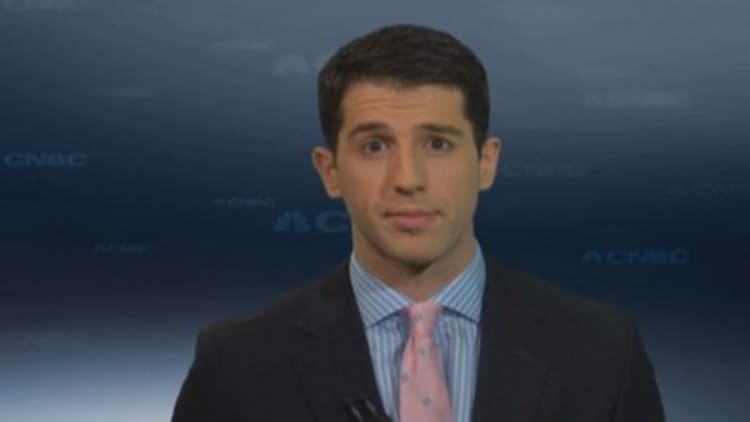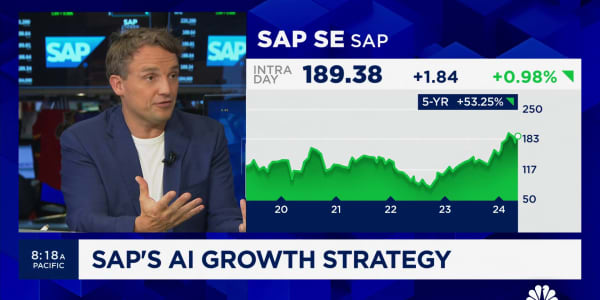
Surprise, surprise: Low-key investment funds that diversify their portfolios across asset classes to protect them for the long term are again proving their value.
So-called "risk parity" funds—run by prominent investment firms like Bridgewater Associates, AQR Capital Management and Invesco—are up an average of 3.3 percent through March, according to data from Morningstar, easily beating returns for stocks and bonds. That also is better than a classic 60-40 percent stock-bond allocation, which gained 1.87 percent in the first quarter.
Risk parity is a strategy that holds steady investments in stocks, bonds and commodities that in theory will make money in any economic environment, including inflation or deflation, in cases of either high or low growth. Bonds in the portfolio are often modestly levered to increase their return, which can help make up for equity market losses. The basic diversification idea is a time-honored one: You can't predict the market, but you can predict what assets will do well in different environments.
Bridgewater founder Ray Dalio pioneered the idea to manage his fortune, and his firm launched its risk parity fund for external investors in 1996. Most other funds were created following the financial crisis.
The problem is that investors are getting out of the funds following average losses of 0.01 percent in 2013—and worse at several major firms. Morningstar estimates that $1.45 billion of investor capital has been pulled from risk parity funds in 2014, bringing capital in the previously fast-growing strategy to $11 billion as of March 31.
Risk parity fund performance
| Fund | Q1 return | 2013 return |
|---|---|---|
| Salient Risk Parity | 5.83% | -4.58% |
| Columbia Risk Allocation | 4.92% | -6.15% |
| Managers AMG FQ Global Essentials | 4.67% | -1.95% |
| Bridgewater All Weather | 4.53% | -4.62% |
| AQR Risk Parity Fund | 2.88% | 0.12% |
| Putnam Dynamic Risk Allocation | 2.36% | 3.99% |
| Invesco Balanced-Risk Allocation | 1.51% | 2.29% |
| RPG Diversified Risk Parity | 1.07% | 6.42% |
Source: Source: Morningstar, CNBC.com reporting
Experts say 2013 was an anomaly.
"Last year was a perfect storm of bad market circumstances for risk parity funds," said Josh Charlson, director of alternative funds research at Morningstar.
Scott Wolle, chief investment officer of Invesco Global Asset Allocation and manager of the firm's risk parity fund, agreed.
"2013 was very unusual in the sense that both commodities and government bonds performed poorly while developed stock markets soared," Wolle said. "Many people mistakenly attributed performance challenges solely to rising rates and ignored the headwinds from commodities. As a result, they vastly overestimate the effect of rates on the strategy."
Read MoreHedge funds' secret weapon is ex-Obama advisor
Critics have said rising interest rates are likely to hurt risk parity funds, especially if stocks fall and bond yields are too low to make up the difference. But investment managers counter that the strategy performs well in the long run, and historical testing through periods of low-interest rates proves it.
According to Salient Partners, which offers a risk parity mutual fund, the strategy has also consistently performed well both just before and after down years.
"People lose sight of how well risk parity has done in the rebound," said Lee Partridge, Salient's chief investment officer. "It's kind of like pushing a beach ball under the water and then the air that's in it just pops it right back up. That's what we're seeing right now."
For example, the Salient Risk Parity Index, which tracks historical strategy returns, was up 34.39 percent in 1993 before falling 3.46 percent in 1994. It then gained 30.33 percent in 1995.
Bridgewater declined to comment for this story, but Dalio also has brushed aside criticism of the All Weather fund's heavy bond allocation by citing historical performance.
"If you say, 'How did All Weather do in the 1970s?' which was a decade of rising inflation and a period that was very bad for bonds, the portfolio did very well," Dalio said in November at the DealBook conference, citing the fund's inherent asset balance.
Bridgewater's All Weather fund—the first of its kind—fell 4.62 percent in 2013, but its annualized return since inception in 1996 is 8.9 percent. It also gained 4.53 percent in the first quarter.
The fund is designed to "chug along, providing attractive, relatively stable returns" using equal allocations to baskets of securities that will do well in all economic scenarios. Allotments include stocks, commodities, corporate credit and bonds linked to inflation rates, among others, according to a marketing brochure.
Fund managers still believe in their product today.
"The strategy is designed with the acknowledgement that losses matter more than gains and so tend to cope with uncertainty and turmoil better than more traditional strategies," Invesco's Wolle said. "In particular, risk parity explicitly addresses the risk of recessions and crises as well as periods of rising inflation."
Regardless, 2013 was a reminder that no investment strategy is infallible.
"It was a useful reminder that there are risks to risk parity funds—just because the risks are equalized doesn't mean they go away," said Morningstar's Charlson. "Even though they're marketed as the whole kind of 'all weather' concept—that there's something that's going to keep them doing well in every sort of market—there are circumstances that maybe they haven't fully anticipated where they can be hurt."






